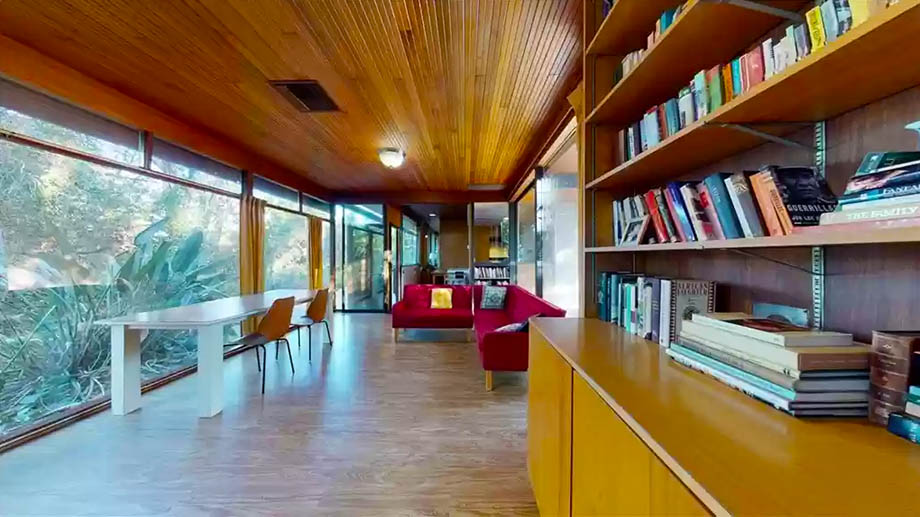I spent much of my weekend showing houses to buyers. Every time I do this, it’s always the same experience for me. I wonder why anybody with the slightest understanding of aesthetics would have built such houses — and why anybody would buy them.
I’m in the minority on this, of course, because almost everybody buys whatever is popular among his friends and family. They don’t know any better. They buy what they know. They buy what seems “normal” to them. So they buy houses which are painfully garish or pretentious or dull to me. And builders keep building those sorts of houses — simply because that’s what people expect to buy.
When I’m showing such a house — and people are talking about borrowing half a million dollars to buy it — I want to ask them if this is what they really want. I want to ask them if they’ve ever considered the warmly beautiful piece of living art they could build for that money instead. I want to show them houses such as this one on the market right now in Redlands, Calif.
But I don’t — because I remember how ignorant I was about design philosophy before I finally learned to appreciate good architecture, too. They wouldn’t appreciate my suggestion any more than I would have appreciated it back when I wanted something which I would loathe today.
When I was growing up — and when I was a young man — I liked houses which aren’t too different from the houses I show in affluent Birmingham suburbs today. That’s all I’d ever known. I’d heard of modern architecture, of course, but much of what was called by that name was ugly and cold and lifeless.
It wasn’t until I discovered the work of mid-20th century architect Frank Lloyd Wright that I started understanding that modern design could be beautiful and delightful and livable. I learned that good modern design was warm and organic. It felt like something which had come alive to serve the needs of its owners
I came to understand that much of what some architects and builders do today is simply falsified versions of things — for effect — which was once done for necessity. We’re accustomed to seeing columns and arches, for instance, as design flourishes, not understanding that builders are simply doing fake versions of things which the Greeks or Romans developed out of necessity.
And the more you understand about this, the more false and dishonest these houses seem.
The California house that I’m showing you here was built in 1952, so the concepts aren’t exactly new. This one was designed by famed architect Richard Neutra, who briefly worked for Wright after he moved to the U.S. from his native Austria.
It’s the aesthetic of the house that I’m suggesting you understand, not the specifics. For instance, the kitchen is badly out of date compared to what would be acceptable today. Lighting has advanced in ways that would allow much of this house’s lights to be recessed if it were built today. But even though this house was built 70 years ago, it’s more liable and thoughtful about the lives of its residents than modern cookie-cutter houses are.
Most houses today are like display pieces. They say to our friends and family, “Look. Don’t you think we seem prosperous and successful? See these fancy columns? Aren’t you envious of us?” A better home calls less attention to itself and more attention to the life and beauty which it guides you to experience.
Few of the people I show houses to today would get that. I certainly didn’t get it when I first came across the ideas. It wasn’t until I was somewhere in my 30s when the ideas suddenly clicked for me — and the things I had once been taught to admire finally felt stale and downright laughable.
You might not understand, either. In fact, you probably won’t, simply because it’s not what you know.
The odd thing is that a lot of wealthy people do buy beautiful modern homes, but I’ve come to suspect that most of them buy such design because they’re told it’s impressive, not because they understand.
I’ll build such a house for myself one day. I don’t know where it will be or who will design it for me. And when I do, I will have a home which serves its family — not just another house which is intended to project the buyers’ ego and status for the rest of the world to see.


 Can we find peace online when social media have become toxic?
Can we find peace online when social media have become toxic? ‘I know who you are,’ she grinned.
‘I know who you are,’ she grinned.